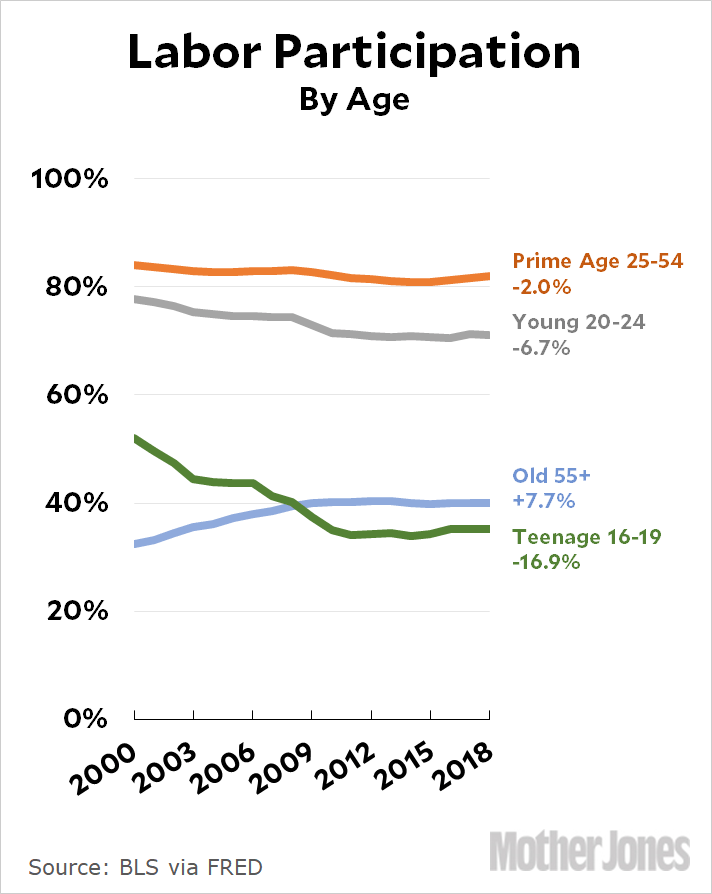This morning’s post about automation got me curious about the labor participation rate by age group. Here it is for the past couple of decades:

Labor participation for prime-age workers has changed only slightly, declining from 84 percent to 82 percent. The big change has been among young and old. Older workers have increased their labor participation rate by nearly 8 percentage points while young workers have reduced their labor participation by about 7 points. Labor participation among teenagers has plummeted by 17 points.
Most of this change happened between 2000 and 2010. Participation rates have been nearly dead flat for all age groups since then.
I’m not quite sure what to make of this, though the 2000-10 period coincides with the greatest impact of Chinese imports on American labor. I’m skeptical that these two things are related, however, since Chinese imports should mainly have affected American manufacturing, which employs mostly prime-age workers. And yet prime-age workers saw virtually no change in labor participation during that period. The drop was all among young workers.
For what it’s worth, there’s a similar pattern in wages. For both young and prime-age workers, wages have been about flat since 2000. Among workers age 55-64, wages are up 8 percent.
Anyway, the answer to the question in the headline is: young workers between the age of 16-24 have been screwed the worst. Conversely, prime-age workers have been doing OK, while older workers have been doing great.

















